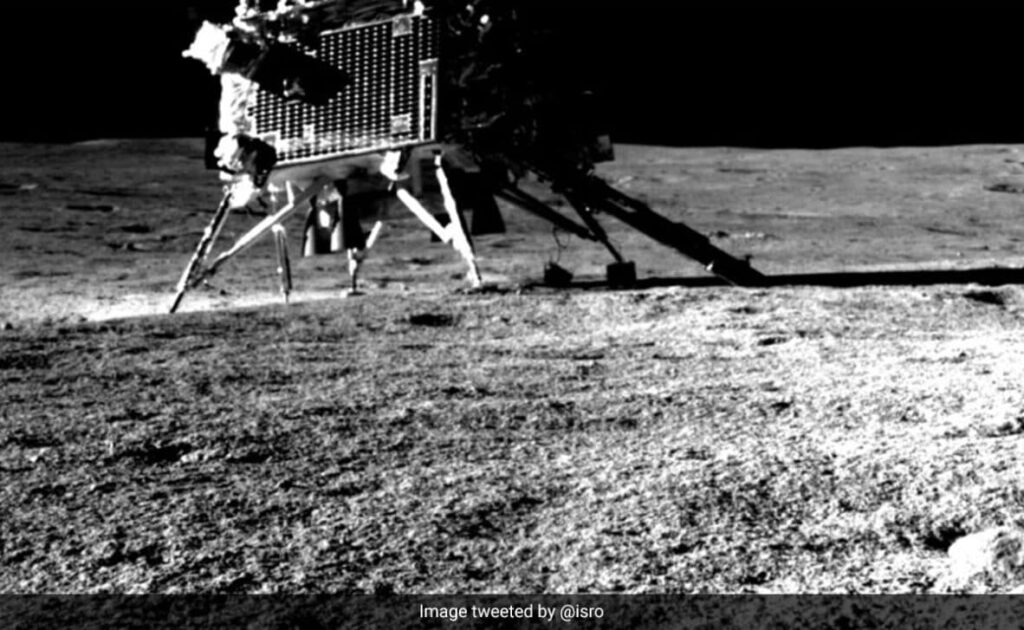NASA spacecraft successfully ‘pings’ India’s Chandrayaan-3 lander on Moon

NASA’s Lunar Reconnaissance Orbiter (LRO) has achieved a significant milestone by successfully pinging India’s Chandrayaan-3 mission’s Vikram lander on the Moon’s surface. This breakthrough was made possible through a laser instrument onboard the LRO, which transmitted and reflected laser beams between the orbiter and the small device on the lander. The successful ping has opened the door to a new method of precisely locating targets on the Moon’s surface.
The Vikram lander was located 100 kilometers away from the LRO, near the Manzinus crater in the Moon’s south pole region when the laser pulses were transmitted towards it on December 12, 2023. The orbiter registered and detected the light that bounced back from a tiny NASA retroreflector aboard the lander, thereby confirming the success of the technique.
This method of sending laser pulses towards an object and measuring the time it takes for the light to bounce back is commonly used to track the locations of Earth-orbiting satellites. However, the innovative aspect of this achievement lies in the reverse application of the technique — sending laser pulses from a moving spacecraft to a stationary one to determine its precise location.
A #NASA spacecraft has successfully pinged India’s #Chandrayaan3 lander on the moon.https://t.co/LGQDw7wVRT
— The Hindu (@the_hindu) January 19, 2024
Xiaoli Sun, who led the team at NASA’s Goddard Space Flight Center responsible for developing the retroreflector on the Vikram lander, expressed optimism about the future of this technique. The team aims to enhance the technique so that it can become a routine method for missions utilizing retroreflectors in the future.
The retroreflector used by NASA is an incredibly compact device. Known as a Laser Retroreflector Array, it measures only 2 inches or 5 centimeters wide. It consists of eight quartz-corner-cube prisms set into a dome-shaped aluminum frame. This configuration allows the retroreflector to reflect light coming in from any direction back to its source, making it suitable for various scientific and exploratory applications.
Additionally, retroreflectors have been a crucial tool for lunar studies since the Apollo era. By reflecting light back to Earth, they have provided valuable insights such as the lunar drift, which shows that the Moon is moving away from Earth at a rate of 3.8 centimeters per year.
In response to this accomplishment, the Indian Space Research Organization (ISRO) stated that the Laser Retroreflector Array (LRA) on the Chandrayaan-3 lander has begun serving as a fiducial point, providing precisely located markers for reference on the Moon’s surface.
The successful ping between the LRO and Vikram lander demonstrates the power of international collaboration in space exploration. NASA and ISRO’s partnership has proven fruitful, and the development holds promise for future lunar missions that may utilize retroreflectors. This achievement signifies a significant step forward in the field of lunar exploration and the growing body of scientific knowledge about the Moon.







Leave a Reply